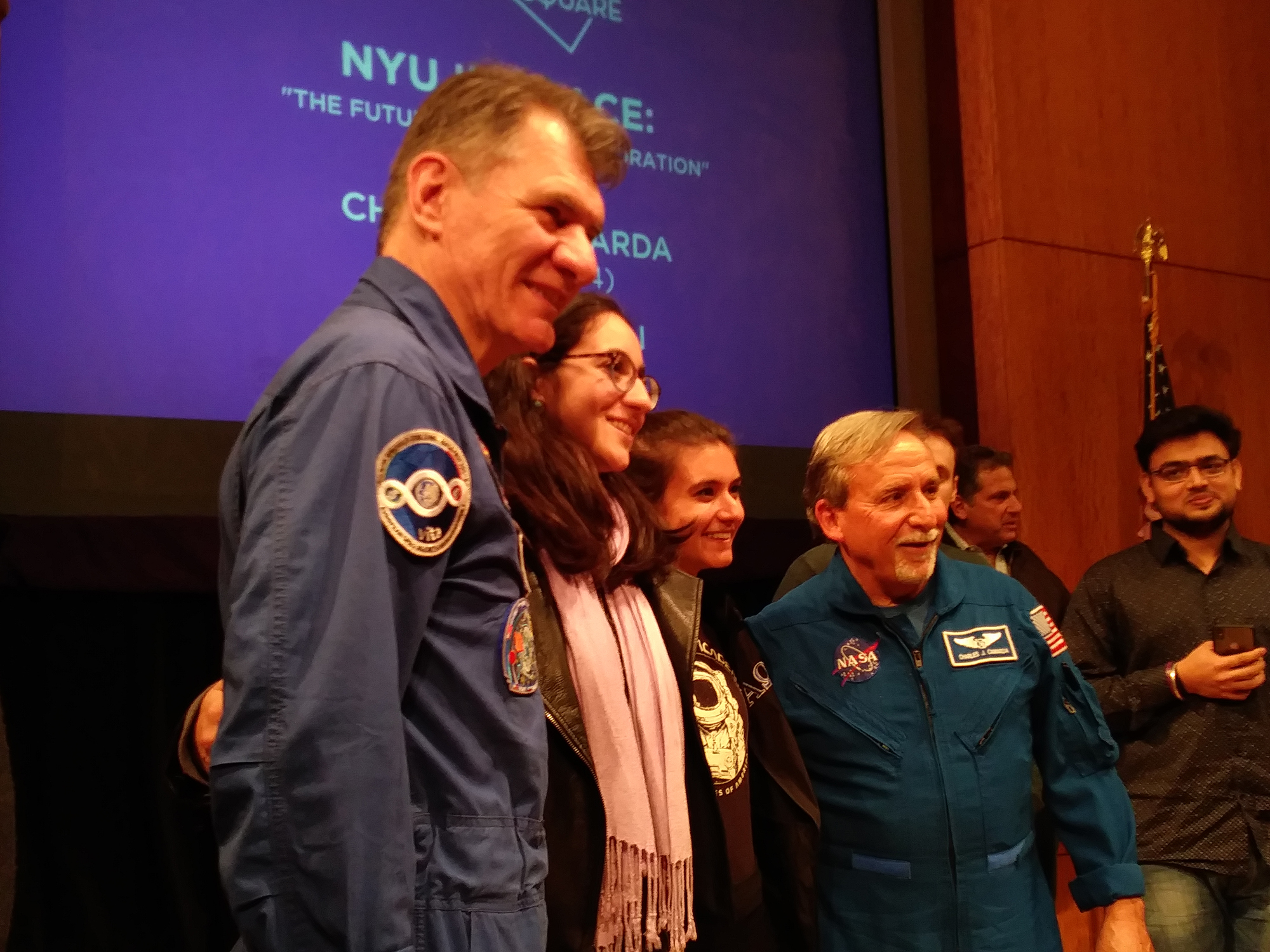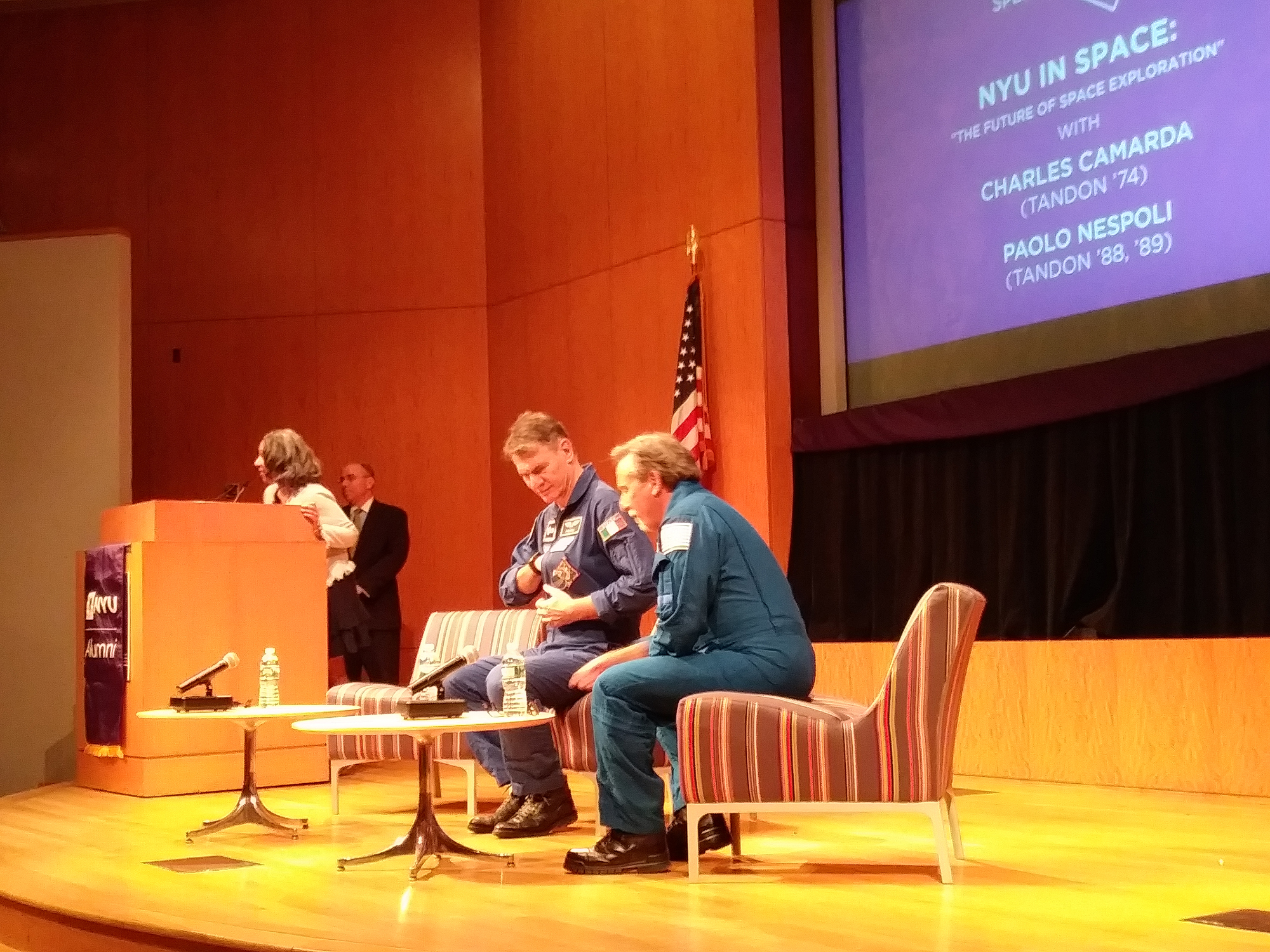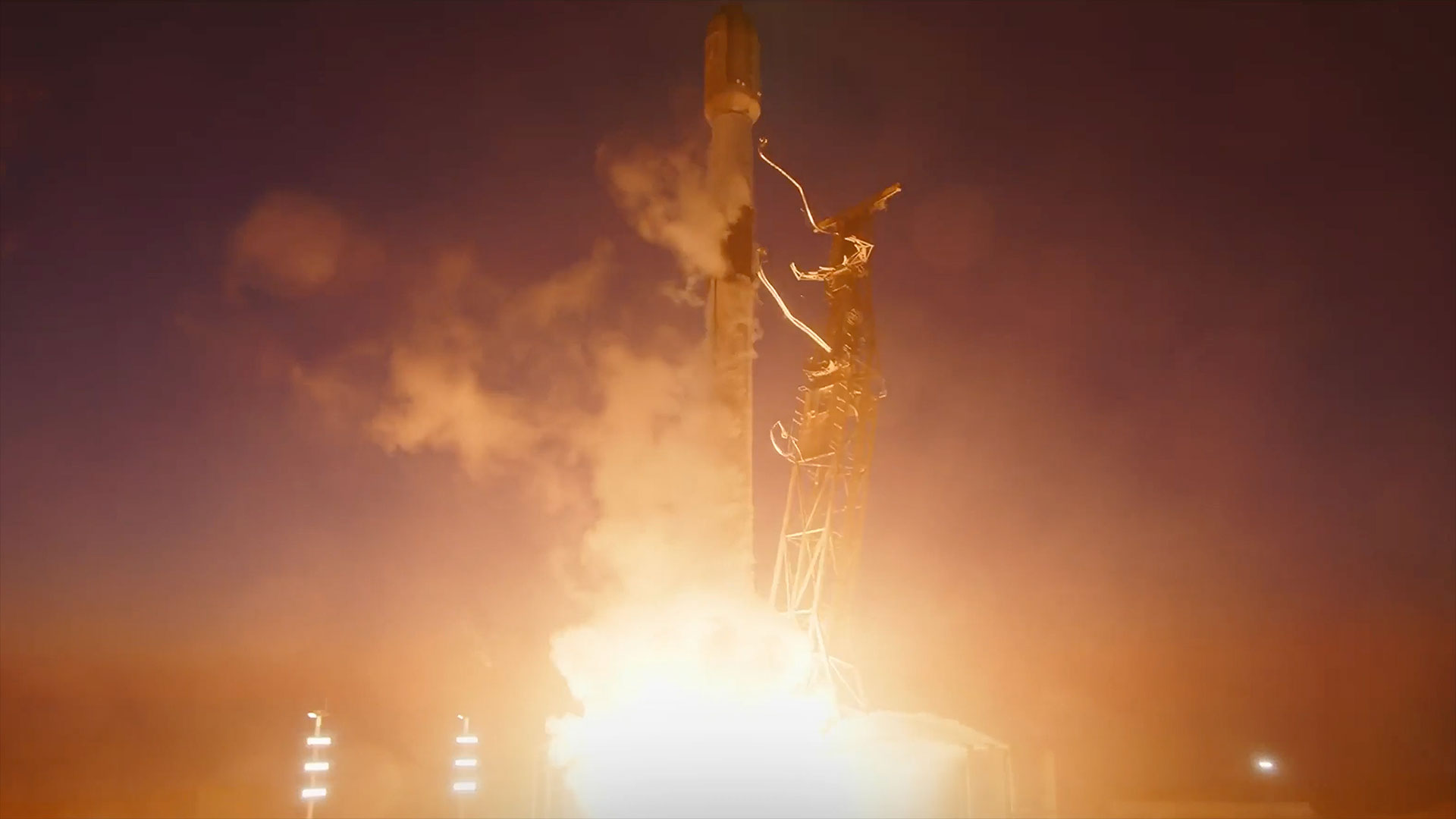Astronauts Talk Poets in Space and Mars Machinery with Future Engineers

NEW YORK — Some astronauts think poets and cinematographers deserve a trip to space.
Astronauts Charlie Camarda and Paolo Nespoli were mission specialists on different Space Shuttle Discovery flights. In 2005, Camarda was part of STS-114, the first shuttle mission to fly after the tragic Columbia accident that caused the deaths of seven astronauts. In 2007, Nespoli crewed the STS-120 Discovery flight, and returned to space two more times for Expeditions 26/27 and 52/53 on the International Space Station.
Last month, both astronauts landed here at NYU Tandon School of Engineering, their alma mater, to explain to a new generation of innovators what it's like to fly in space. [Stunning Space Photos from Astronaut Paolo Nespoli]
"When I was a little kid, people would ask me, 'Paolo! What do you want to be when you grow up?' and I would say, 'I want to go to the moon!'" Nespoli said during the April 19 event. He made a grumbling sound to imitate the naysayers who thought his dreams were cute, but confined solely to the realm of his imagination. Nespoli said he kept doubting himself until he was much older. "I had to get to 26 [years of age] to say, well, you know what happens if you have a dream and you don't try? You already fail."
Camarda touched on his youthful dreams to fly, too, and talked about the special significance of the first and only voyage he made into Earth's orbit. "We flew right after the Columbia incident, and so we had all this new technology that we had to test out to make sure we would fly safe."
Both astronauts agreed that shuttle flights encouraged a "sprint" mentality and gave a sense of hyperfocus to their work, since the flights lasted just a few weeks. But Nespoli said long-duration space station expeditions, lasting several months at a time, were more like a "marathon" and therefore gave him more time to reflect.
Nespoli also painted a romanticized image of artists coming on board the space station.
Get the Space.com Newsletter
Breaking space news, the latest updates on rocket launches, skywatching events and more!
"I am in space and I am looking at the beautiful Earth at night. When I’m supposed to sleep, I go and I look out the window and I look down and I see Earth and I can think, can you imagine what would happen if there was a poet here? A photographer? Incredible pictures!" said Nespoli. "I'm just a guy that tries shooting a picture and goes away, but there isn't someone who’s there [taking photos] 24/7. We need cinematographers. We need theologists."
But not all moments were full of wonder. Nespoli revealed that his mother's failing health during a mission brought on a "sense of impotence." Speaking about the difficult experience, Nespoli added, "you’re still a human being that works from 7:30 in the morning to 8:30 in the evening … but we cannot compartmentalize those things."
The question about humanity's next big steps in space also arose. Both astronauts said humanity will extend itself beyond the blue planet, and Camarda emphasized the importance of robotics and machinery over human transportation vehicles, at least for now. "If we really want to go to the moon, and to Mars … I think it's going to be the machine and robots that will be blazing the trail," Camarda said. "We'll be pre-positioning the technology … so that when we do send humans to these far reaches of the universe, we make sure that they are as safe as possible."

In addition to hosting the microgravity experiments that could make deep-space human exploration possible, the space station is also a tribute to what's possible when nationalism is cast aside for a common human goal, the astronauts said.
"Over 15 different countries helped to build pieces of a vehicle that's the size of a football field flying in space, that was never assembled or fitted on Earth," Camarda said. "And we did it together."
Follow Doris Elin Salazar on Twitter @salazar_elin. Follow us @Spacedotcom, Facebook and Google+. Original article on Space.com.
Join our Space Forums to keep talking space on the latest missions, night sky and more! And if you have a news tip, correction or comment, let us know at: community@space.com.

Doris is a science journalist and Space.com contributor. She received a B.A. in Sociology and Communications at Fordham University in New York City. Her first work was published in collaboration with London Mining Network, where her love of science writing was born. Her passion for astronomy started as a kid when she helped her sister build a model solar system in the Bronx. She got her first shot at astronomy writing as a Space.com editorial intern and continues to write about all things cosmic for the website. Doris has also written about microscopic plant life for Scientific American’s website and about whale calls for their print magazine. She has also written about ancient humans for Inverse, with stories ranging from how to recreate Pompeii’s cuisine to how to map the Polynesian expansion through genomics. She currently shares her home with two rabbits. Follow her on twitter at @salazar_elin.
